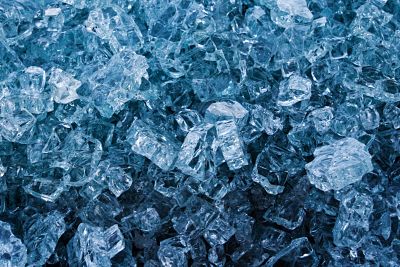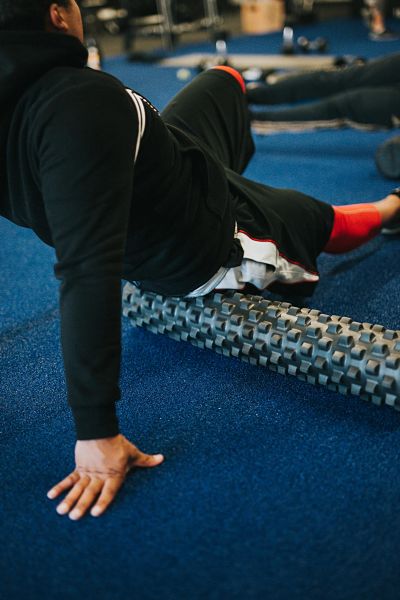We’ve covered the importance of the basics of nutrition, hydration and sleep for recovery in our blog - the Science of Recovery. Once you’ve got those sorted, it’s time to consider the gizmos and gadgets that claim to guarantee decreased muscle soreness and a quicker ‘bounce-back’.
We take a closer look at some of the most popular recovery methods in the field, comment on the research, and weigh up what should be worth your time, effort and money.
Ice baths
Let’s start with the age-old classic and one of sport’s most popular recovery aids: ice baths.
Ice baths were first popularised within sporting circles in the 1970s and they remain an integral part of most sports teams’ recovery practice.
The rationale behind ice baths aiding recovery is that cold water exposure causes the supplying blood vessels to constrict which reduces blood flow. This diversion of blood away from the exposed areas impedes the inflammatory response which in turn inhibits swelling.
Whether you’re icing an injury or tired muscles, reducing inflammation and swelling sounds desirable.

But, more recent evidence suggests that the inflammatory response is necessary for proper recovery and that by delaying the process you’re only slowing healing and delaying adaptations occurring. Therefore, icing may not only be unhelpful to recovery but could actually be detrimental to the process.
Icing holds an attraction to athletes because it’s cheap and accessible - which is always a win - and because you can feel it. Our natural inclination as athletes is that if something feels painful, it must be effective. For this reason, ice baths could be considered to have a very strong placebo effect.
In general, athletes do report feeling small but meaningful improvements from ice baths and a 2011 meta-analysis found they reduced perceived muscle soreness by ~16%.
It’s true that icing temporarily numbs the area and can therefore reduce the feeling of pain (athletes prone to suffering DOMS might particularly benefit). If it’s short term recovery you’re seeking between events and you’re less concerned about facilitating adaptations, then icing might be very effective.
Should long-term recovery be your primary concern, then the evidence suggests skipping the cold dip.
Saunas
The other end of the spectrum now: hot, hot saunas.
A post-training sauna visit seems to be on the rise. Its role in recovery boils down to the heat improving blood flow - the opposite effect to an ice bath.
Theoretically, the rise in core body temperature dilates the body’s blood vessels, thus improving circulation and aiding the body’s natural recovery process.
For many, a sauna is considered relaxing and pleasant and, as a result, may effectively reduce muscle tension (far better than grimacing in an ice bath anyway).
Stepping away from recovery for a brief moment, there’s also strong scientific rationale that post-session passive heat exposure, whether this be a hot bath or sauna, aids a person’s heat acclimation.
So, should an athlete be preparing to compete somewhere hot, bear in mind that a stint in the sauna after working out might be useful for a multitude of reasons, not just recovery!

Recovery drinks
We’ve covered the situations when replenishing sodium and fluid after exercise is important in our blog - How to rehydrate quickly to improve recovery. But, is there any value in the increasingly popular practice of using coconut water or cherry juice?
Coconut water
Coconut water is a ‘natural’ drink marketed recently as an effective recovery drink. Andy’s written a blog on coconut water being used in exercise before so head over to that to read more: Why drinking coconut water during exercise is coco-nuts. Spoiler: it’s not an ideal drink for athletes!
Cherry juice
Cherry juice is another recovery drink option which seems to be rising in popularity. The juice is made from Montmorency cherries which are particularly rich in antioxidants, other flavonoids and also contain melatonin. Studies have also shown a positive effect on muscle function and reduced inflammation.
On the flip side, Asker Jeukendrup has suggested that a large intake of antioxidants may impair training adaptations to exercise. Whilst it looks promising, the research is definitely still in its infancy and more work is clearly needed to understand the specific functions of antioxidants and the dose and timing of intake.
Massage
Massage is a standard practice in the athletic world. In fact, you’d probably struggle to find a major team or club which doesn’t offer it. A lot of athletes swear by the practice and enjoy it, finding it both relaxing and beneficial.
Despite this, the actual science behind massage is mixed. A common misconception is that it ‘flushes the blood’ and helps with lactic acid removal.
If massage does help with recovery, it’s unlikely to be because it flushes the muscles and removes lactic acid - this happens naturally soon after exercise if some light, active recovery is undertaken (i.e. jogging!).
It appears more likely that the biggest benefit of massage is the positive effect it has on an individual’s pain sensation. It’s hypothesised that the mechanical stimulus of massage may ‘close’ neurological pathways, though this mechanism is poorly understood.
Like a lot of recovery methods, it’s extremely difficult to measure the effects of massage in a study. For one, there’s a lack of tangible parameters which can be measured; they’re mostly subjective and secondly, it’s extremely difficult (if not impossible) to blind the treatment from participants.
If you’re receiving a massage on one leg and not on the other, then they’re aware of that. The same is true for ice baths and compression garments. When a person is aware of the treatment they are receiving it creates an expectation; an expectation that they’re going to feel better because something has been done. It’s for that reason that sports massage might also be another example of a very powerful placebo effect.

What does go in the favour of sports massage for being a genuine, effective recovery tool is the feeling of relaxation it can induce. Relaxing the mind is as important for proper recovery as relaxing the body.
Undergoing a massage is a prolonged period of time where athletes can zone out from screens and all of life’s other stresses and really tune into their bodies. This effect could be considered similar to the act of meditation.
Foam rolling
Foam rolling is a form of self-massage and a favourite amongst athletes, particularly runners. It’s said to target the fascia and break down adhesions which can form within it. Fascia is the connective tissue which encases the body’s muscles and tissues and whilst it has no contractile strength, it can become stiff and tight.
On top of this, foam rolling is said to improve flexibility, alleviate fatigue and help with muscle soreness.
For now, the evidence is suggestive but not yet convincing. Some preliminary evidence suggests that it may be helpful, whereas others have shown impairment. If something is happening, it’s thought most likely to be linked to a neurological process.
Where it lies at the moment, there’s no clear cut answer but if an athlete perceives foam rolling to be effective at reducing muscle soreness and pain, then they should probably stick with it.
The power of perception is strong and the feeling of pain is very real, plus foam rolling is low-cost and relatively time-efficient.

Compression garments
Traditional compression garments include compression socks, tights or sleeves. These garments were originally introduced for medical purposes - for example, for use by individuals who struggled with lymphedema (when the lymph nodes don’t properly drain) or deep-vein thrombosis (a blood clot in the lower leg generally) because compression garments were shown to improve blood flow.
The literature also suggests they may reduce muscle damage and the perception of fatigue, which is why they were adopted by athletes. If effective, using them immediately post-exercise is when they seem to be most beneficial.
One of the problems with compression clothing is the very high variability; some garments compress a lot and others much less so. As you can imagine, getting the sizing right is very important.
To combat this, pneumatic compression devices - such as NormaTec compression boots - have materialised which apply intermittent compression to different compartments of an inflatable sleeve worn over the leg (or arm). In the same way that the garments do, they influence blood flow which in turn alters the localised blood pressures.
The devices were once again originally designed for medical use but have been avidly adopted by sports teams and some athletes. They cost a pretty penny which is likely why they’ve not blown up on a bigger scale yet.
So, which recovery tool is right for you?
Ultimately, if you have a recovery process which you feel is helpful and beneficial to you then keep doing it. We’re working with research which for now is largely subjective, so use your time and money wisely and pick the options which make you and your training feel good.
Our knowledge in the area of recovery is going to continue to evolve but whilst this is ongoing, remain sceptical of marketing which has no scientific back-up.
Listen to your body and make sure you get the basics right - namely your nutrition, hydration and sleep.
